The best cellphone signal boosters
Avoid losing signal on important calls, with the best cellphone signal booster available today

The best cellphone signal boosters will help prevent you losing signal when making a call in your home. Which means that whether you're on the phone to your friends, family or work colleagues, you're less likely to suffer the frustration of stilted and stuttering communications, or even losing the call altogether.
Frustratingly, thick walls and other obstacles can reduce the strength of your phone carrier's signal once you're indoors. But the best cellphone signal boosters can solve that problem by amplifying the signal.
When you use a cellphone signal booster, you'll find your calls stop breaking up and immediately sound clearer. You'll also be able to use the mobile internet more quickly and reliably. And you'll probably find your phone battery lasts longer too, because it's having to do less work.
Most of these devices come in three parts: an outdoor antenna, the booster itself, and an indoor antenna. You'll probably have to mount the first part to the side or roof of your house, which involves a spot of DIY, although there are exceptions, as we'll detail further down in this article.
Beyond that, you'll need to decide which of two main types of cellphone signal booster you're looking for. The first is directional, which means you point it at a specific mast. This type is best for when the mobile signal outside your house is generally weak. The second is omnidirectional, which means it will draw signals from a full 360 degrees around it. That makes it much easier to set up, but this type will only work if the signal outside is generally good.
Below, we've brought together the very best cellphone signal boosters available in the North America today, all of which supports at least most of the major carriers in the USA and Canada. If you're in the UK or Australia then the situation is quite different: see Using boosters in the UK & Australia below.
The best cellphone signal boosters in the USA
Why you can trust Digital Camera World
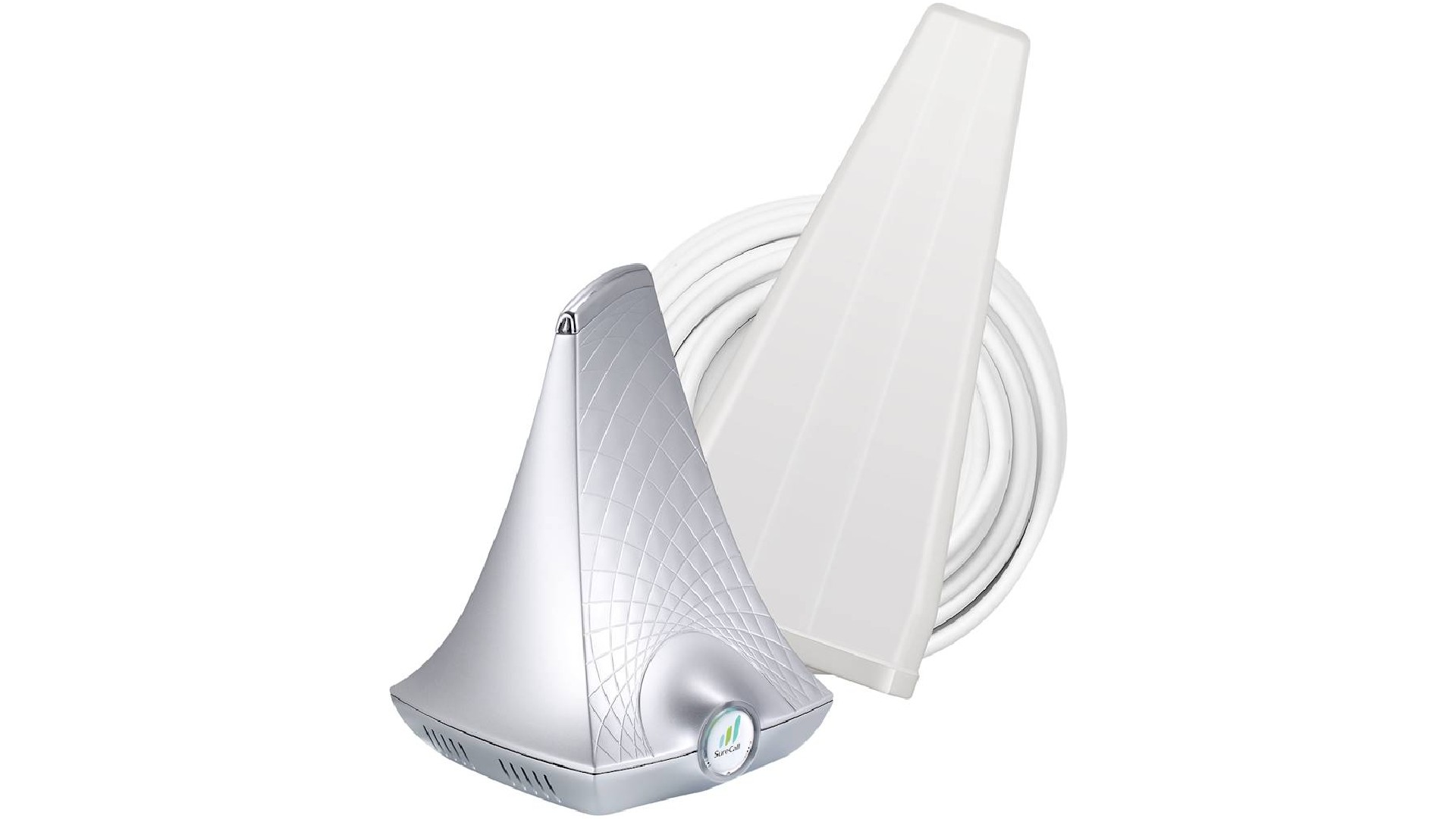
1. SureCall Flare 3.0
Specifications
Reasons to buy
Reasons to avoid
The SureCall Flare 3.0 is our pick as the best cellphone signal booster today. If you have an average sized home, it should allow you to boost your signal across multiple rooms, at quite a reasonable price.
How far its coverage will stretch depends on the strength of the existing signal. SureCall estimates that if you have between one and two bars outside, you'll get around 15,000 square feet of coverage inside. With three to four bars, you'll get 2,500 square feet of coverage; with five bars, 3,500 square feet. For the relatively affordable price, that represents excellent value.
The SureCall Flare 3.0 supports all major carriers, including AT&T, T-Mobile, Verizon, Sprint, Straight Talk and US Cellular. On the downside, you will need to do some drilling to install the exterior aerial. So if you truly hate DIY, you may prefer the next model on our list.
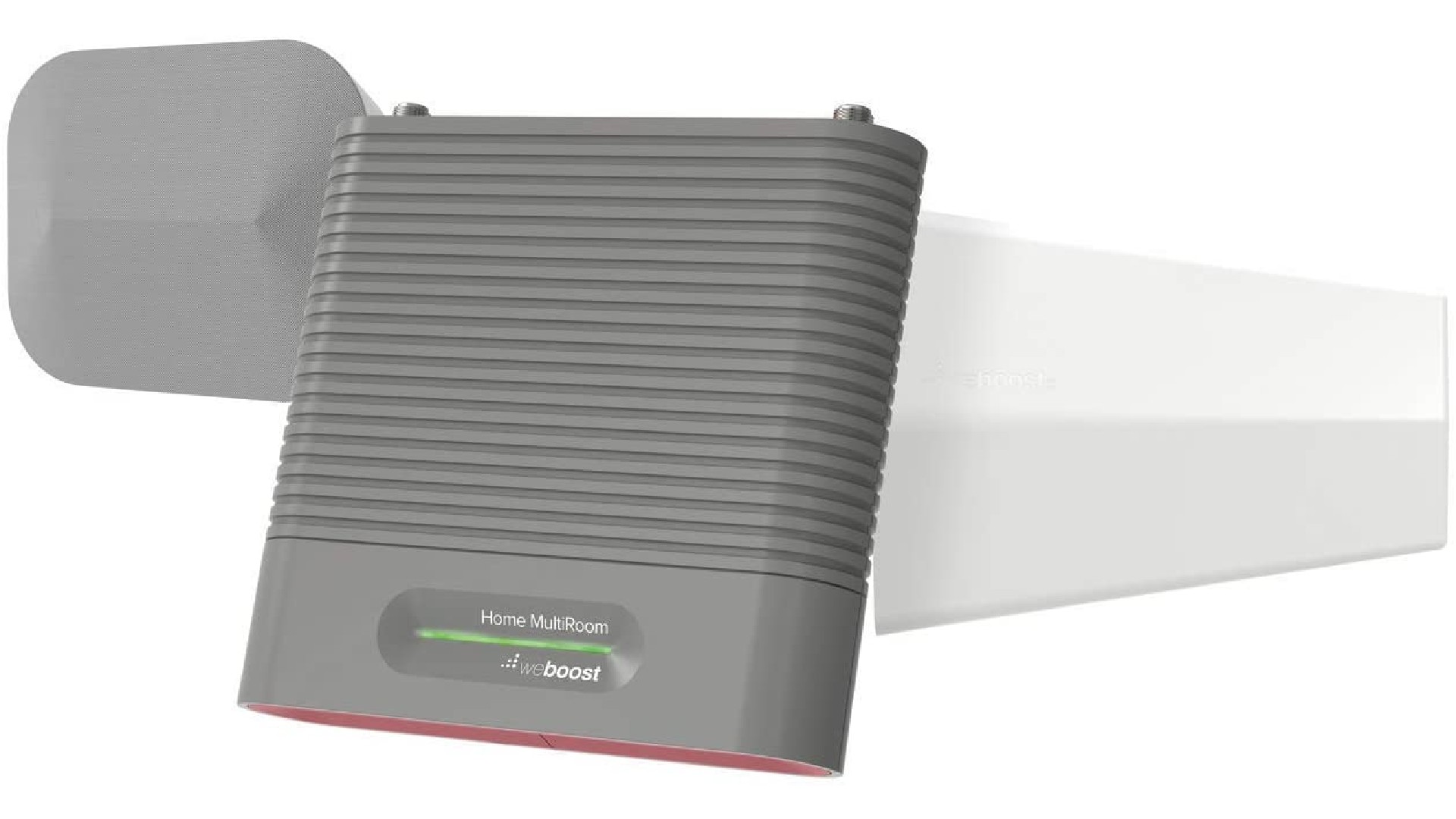
2. WeBoost Home MultiRoom
Specifications
Reasons to buy
Reasons to avoid
If you don't like DIY, then you'll be pleased to know the WeBoost Home MultiRoom won't need you to do any. That's because the outside antenna features an adjustable clamp that attaches to a roof-top vent pipe or standard antenna pole. (Alternatively, you can attach the antenna to the side of your home with the included mounting bracket.)
This device works with all major carriers, including Verizon, AT&T, Sprint, T-Mobile, Straight Talk, and US Cellular, and also promises a wider amount of coverage than most on this list, at 5,000 square feet. On the flipside, it is on the pricey side.

3. SureCall Fusion4Home
Specifications
Reasons to buy
Reasons to avoid
Most of the cellphone signal boosters on this list are directional, which means you need to identify a local mast and point it directly at it. This involves a bit of work, but is the best solution if the signal outside is generally weak.
If, however, the cellular signal in your area is generally good, you can save yourself the bother by using an omnidirectional device instead. This type of cellphone booster gathers signals across 360 degrees, and so does not have to be pointed in a certain direction to work. It's therefore much easier to set up
For our money, the best omnidirectional cellphone signal booster is the SureCall Fusion4Home. Its makers estimate you'll get 1,000 square feet of coverage if you have one to two bars outside, 2,000 square feet with three to four bars, and 3,000 square feet from five bars. This device is compatible with all major carriers including AT&T, T-Mobile, Verizon, Sprint, Straight Talk and US Cellular.
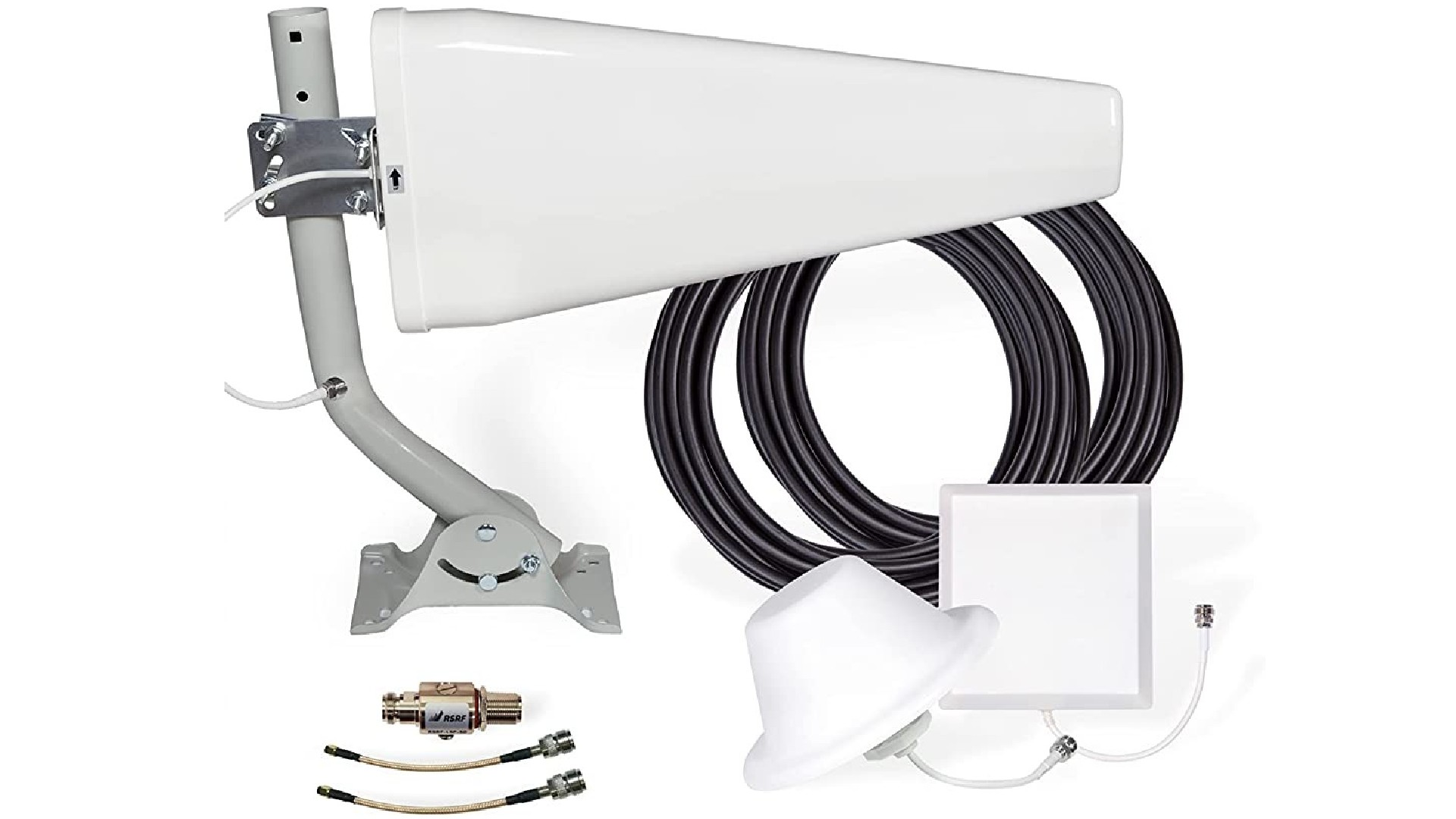
4. Cel-fi GO X
Specifications
Reasons to buy
Reasons to avoid
If you have a very large space to cover, the cellphone signal boosters we've listed so far probably won't be powerful enough. Enter the Cel-fi GO X, which is truly the Rolls Royce option for boosting your mobile signal, both in terms of price and capabilities.
It offers a maximum gain of 100db, by far the most power on this list. And by utilizing four indoor antennas, it's possible to cover up to 15,000 square feet. That should be easily enough to cover a capacious home or office, as well as retail units, hospitals, warehouses and other business premises.
It supports most, if not all, of the major US networks, although if you're a Verizon user be aware that it's not compatible with 2G or 3G but 4G and 5G only. Also note that it tunes itself to one carrier only, so it's not suitable for swapping between multiple carriers.
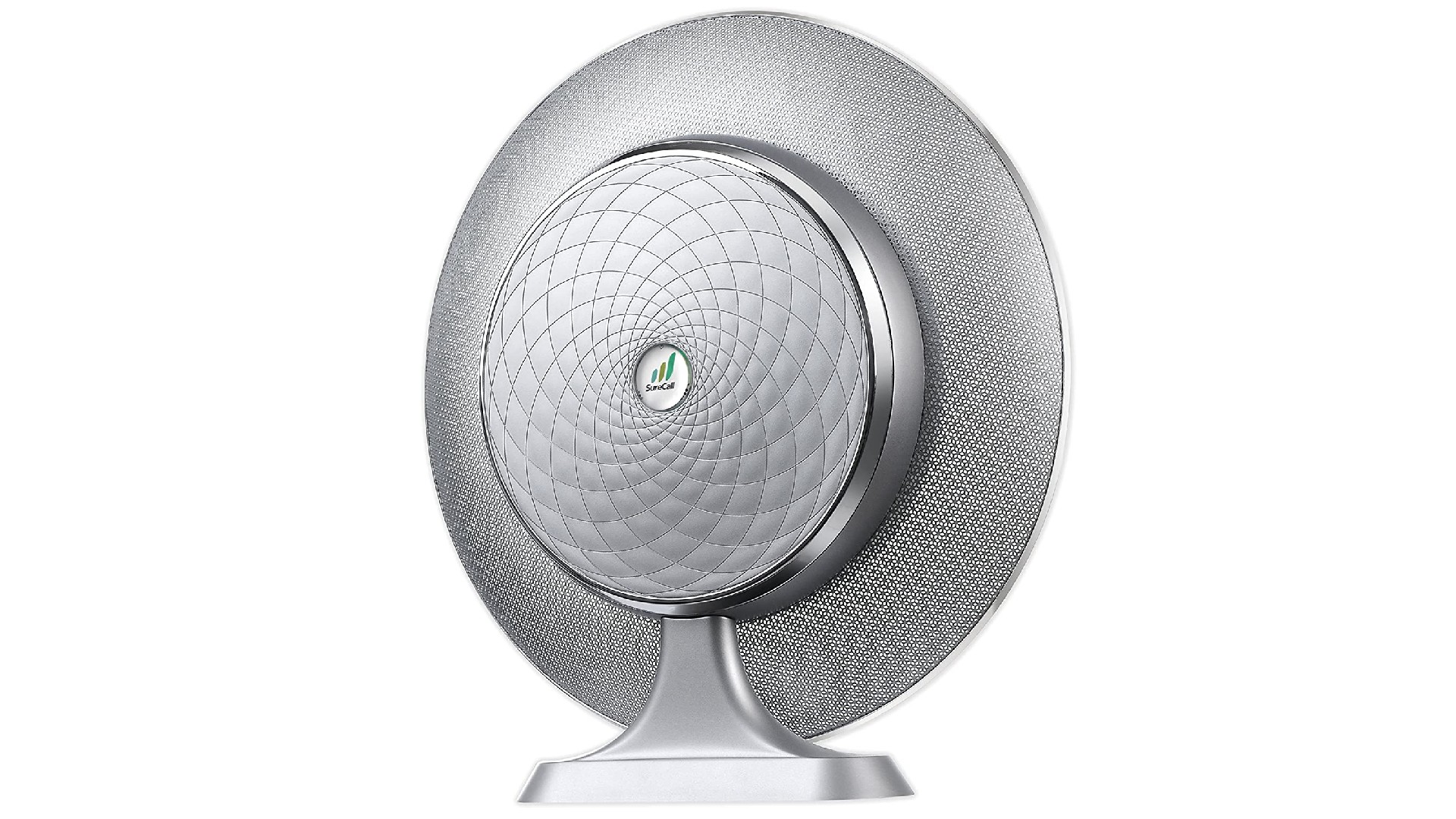
5. SureCall EZ-4G
Specifications
Reasons to buy
Reasons to avoid
The SureCall EZ-4G is easier to set up than most on our list. That's because it doesn't require an external antenna installation, instead mounting to one of your windows. So you can set it up a matter of minutes, without the need to drill holes or go outside onto a roof. It's omnidirectional, too, so you don't even need to worry about where it's pointing. That does mean, though, it's unsuitable if the signal outside is generally weak.
Otherwise, SureCall EZ-4G a great choice for anyone in a small apartment. And even if you can't get it to work for any reason, there's a generous 60-day money back guarantee that's got you covered.
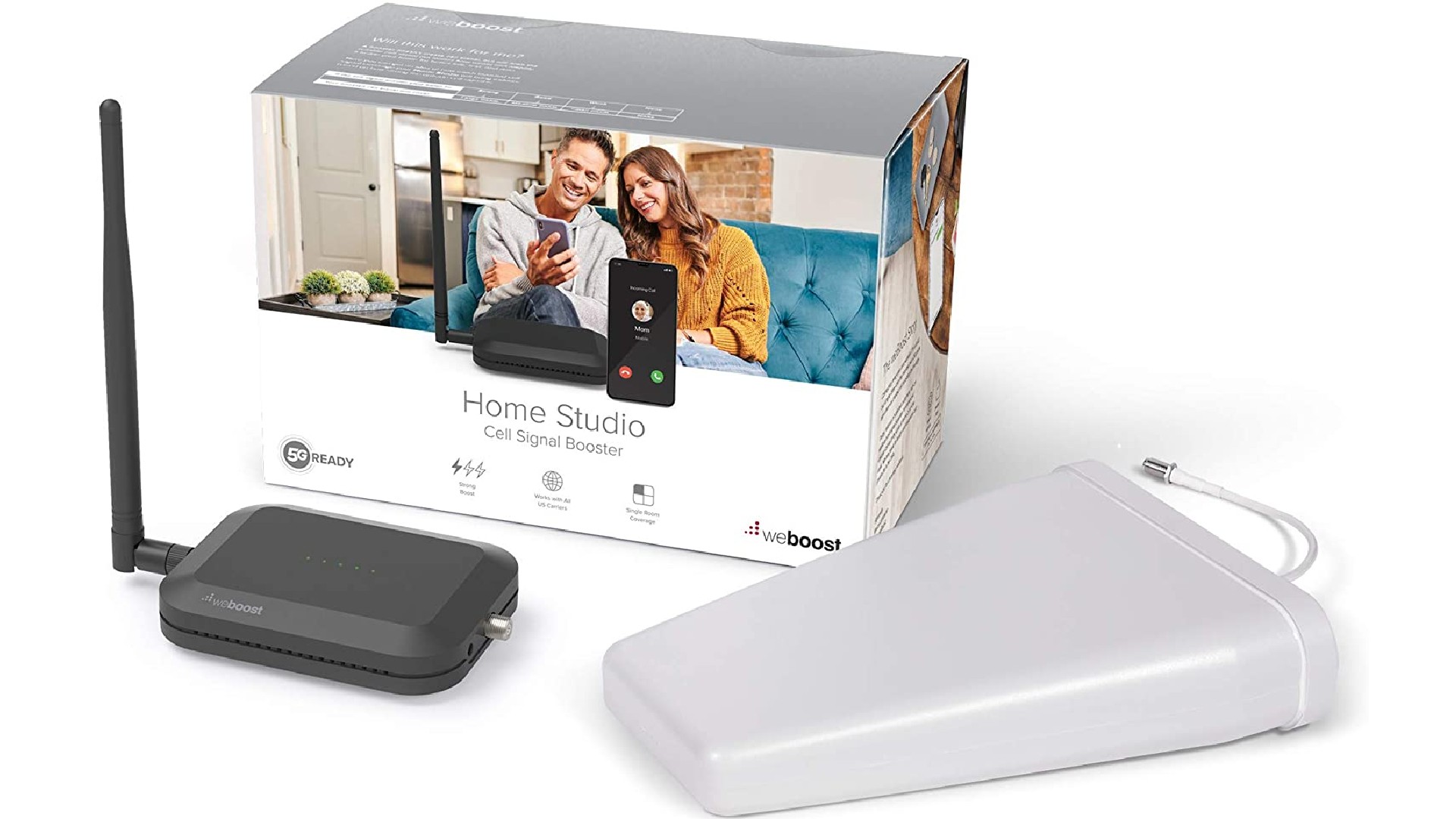
6. WeBoost Home Studio
Specifications
Reasons to buy
Reasons to avoid
Staying in a single room? Then the WeBoost Home Studio is a good choice. It comes in two pieces: a large, directional antenna that goes outdoors, and a small black box that goes inside. You'll need to attach the former to either a pole or the side or roof of your house; the latter you can basically put anywhere. It supports all major networks, is capable of serving multiple users, and promises 2,000 square feet of footage, enough for even the biggest of rooms.
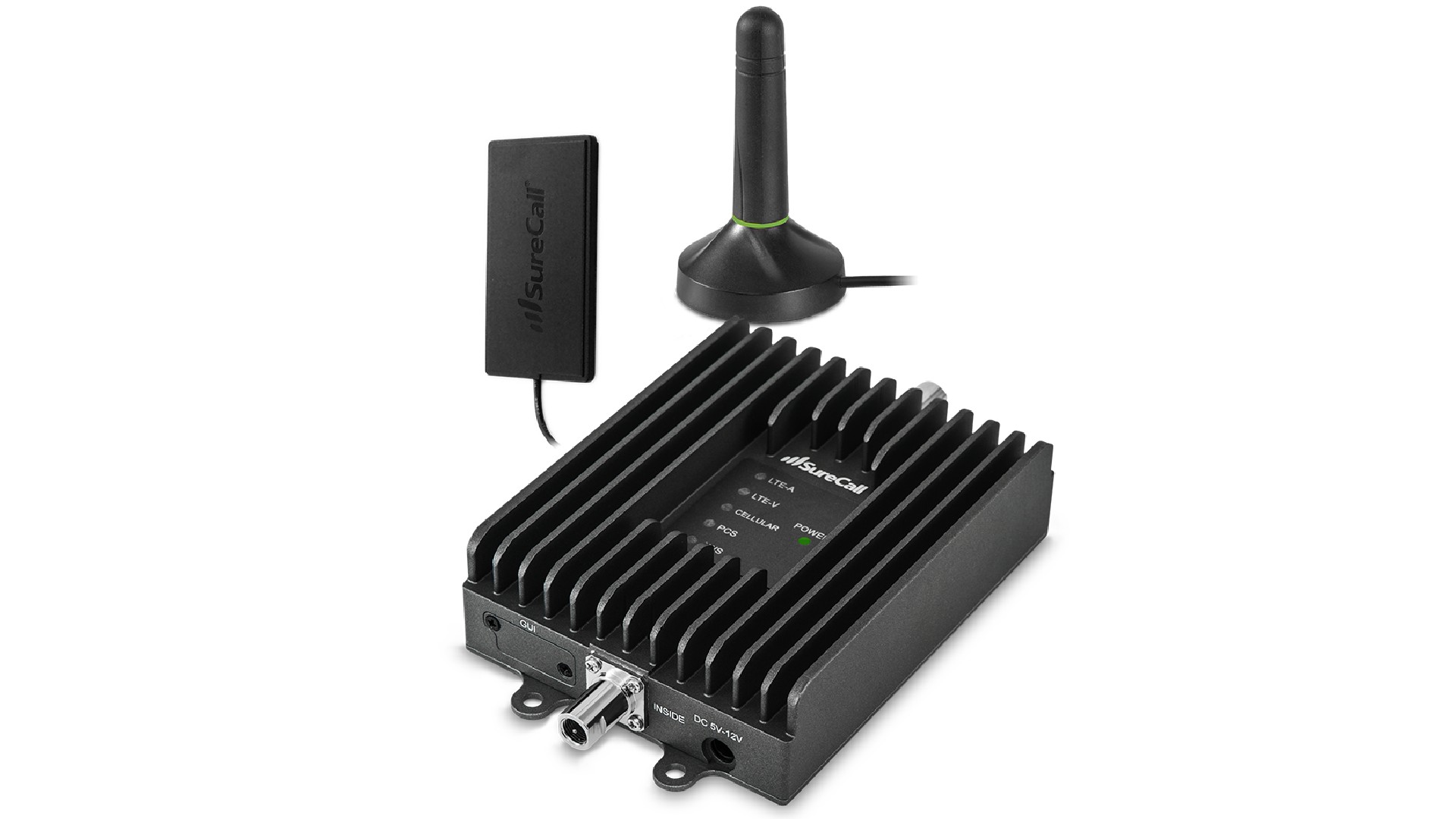
7. SureCall Fusion2Go Max
Specifications
Reasons to buy
Reasons to avoid
Need a consistent mobile signal while driving? Then check out the SureCall Fusion2Go Max, which we think is the best cellphone signal booster for cars, trucks, vans and SUVs available today. It's got plenty of power, offering up to 50db of gain; not as much as indoor cellphone signal boosters, but more than most in-car ones. Plus the company's Extended Range Technology (ERT) does a great job at boosting available signal consistently and reliably. It's also pretty easy to install.
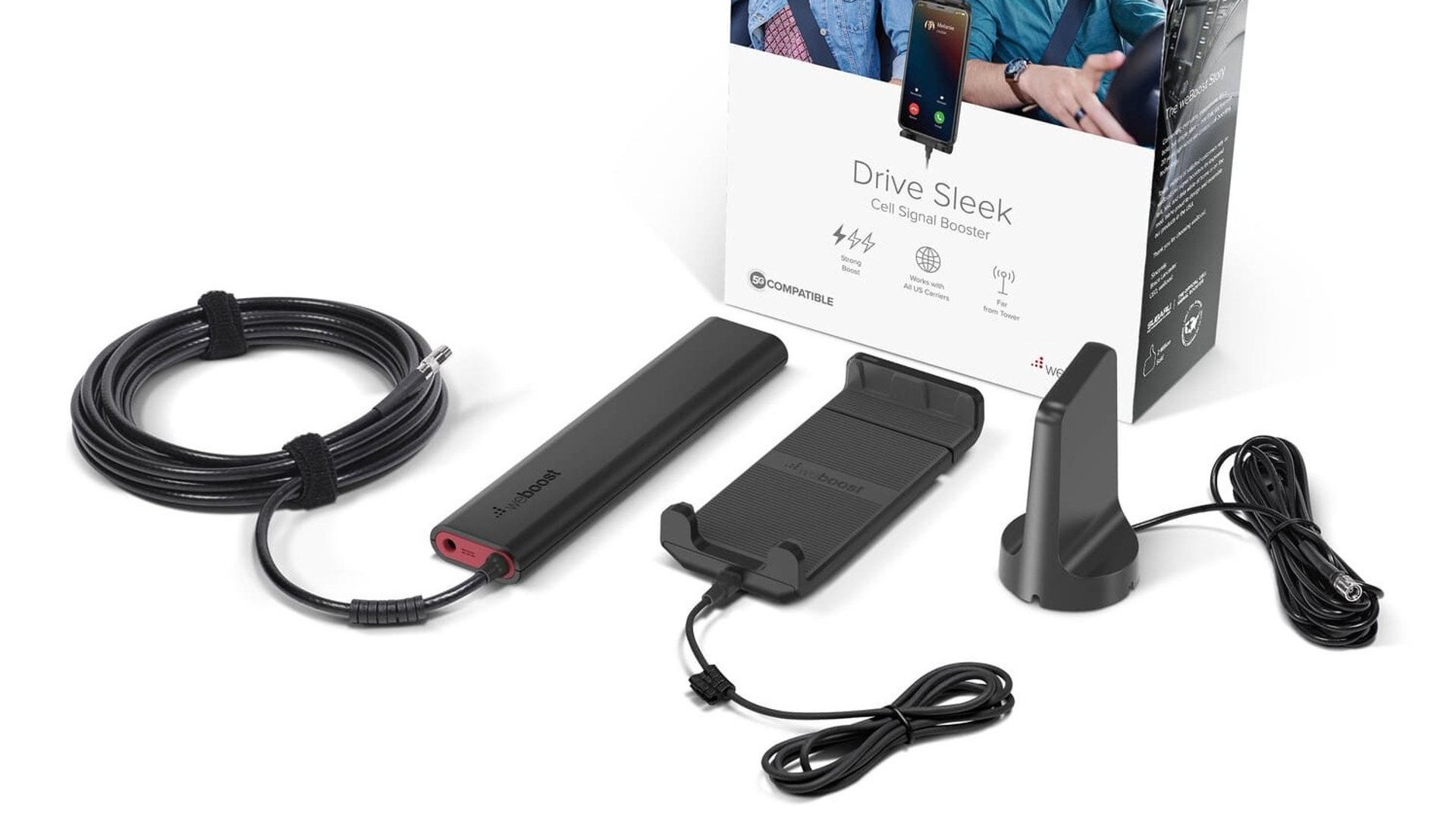
8. WeBoost Drive Sleek
Specifications
Reasons to buy
Reasons to avoid
Need a cellphone signal booster for your vehicle, but don't want to spend too much money? WeBoost's Drive Sleek is a lot more affordable than the SureCall Fusion2Go Max (number 7 on our list) but still does a good job. The main limitation is that it will work with one device only. But as long as that's not a deal-breaker, you can save a lot of cash this way. We also love the phone cradle it comes with, which comes with a USB-A port should you need to charge your phone at the same time.
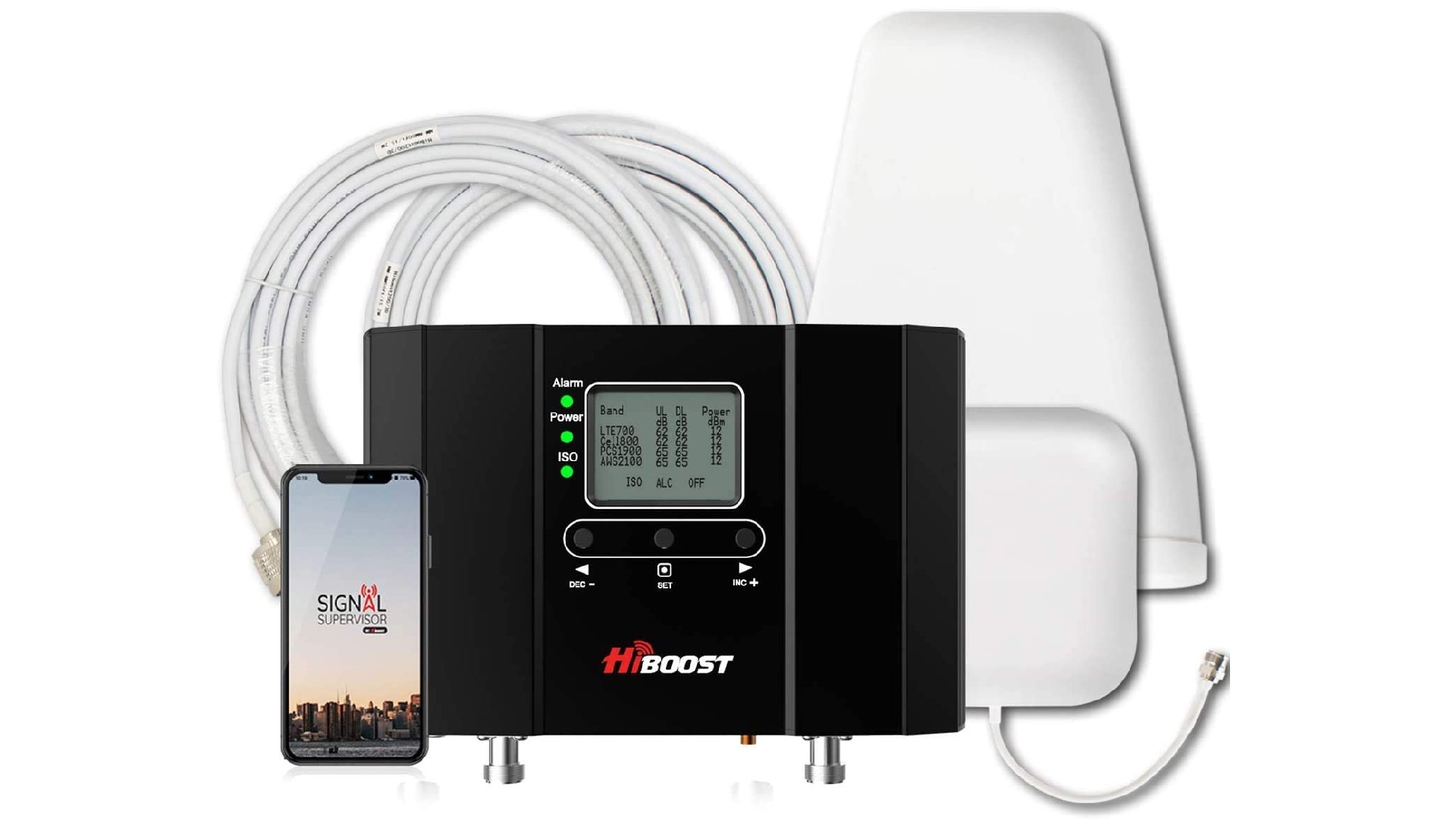
9. HiBoost 10K Smart Link
Specifications
Reasons to buy
Reasons to avoid
The HiBoost 10K Smart Link doesn't excel at one thing in particular, but it does do a lot of things very well. The 10,000 sq. ft. coverage is very impressive, and should be enough for even the biggest homes. It supports all US and Canadian carriers, including AT&T, Verizon, T-Mobile, Sprint, Straight Talk, and U.S. Cellular. When it comes to installation, no drilling is necessary, as the window wire can be fed through the window bottom to connect the outdoor antenna and the cell signal booster. And the app works well in helping you configure your setup, to ensure the signal is as strong as it needs to be.
Using boosters in the UK and Australia
Due to strict Ofcom rules, the majority of cellphone signal boosters are illegal to use in the United Kingdom. And if you’re caught operating a booster that isn't approved, you could face a £5,000 fine or even a year in prison.
Lots of companies will try to sell you a cellphone signal booster online that they claim is 'Ofcom-compliant', but in many cases they actually aren't. (Shock horror, people often lie to you on the internet to get your money.) So the safest way to proceed is to buy one directly from your mobile provider.
If that's O2, you'll want a Boostbox, while if you're a 3 customer it's Home Signal you need. EE, meanwhile, offer a Signal Box, although it's going to be retired on 30 June. And Vodafone has already retired its Sure Signal device. Both companies claim that because they've improved network coverage, their customers no longer require a cellphone signal booster.
Cellphone boosters are also banned in Australia, as explained by this ACMA webpage.
Other gear guides
Best mobile hotspot
Best wifi extender
Best webcam
Best photo copier
Best document scanner
Best all-in-one printer
Best photo printer
Best external hard drives
Best cloud storage for photos
Best VPN
Get the Digital Camera World Newsletter
The best camera deals, reviews, product advice, and unmissable photography news, direct to your inbox!
Tom May is a freelance writer and editor specializing in art, photography, design and travel. He has been editor of Professional Photography magazine, associate editor at Creative Bloq, and deputy editor at net magazine. He has also worked for a wide range of mainstream titles including The Sun, Radio Times, NME, T3, Heat, Company and Bella.

